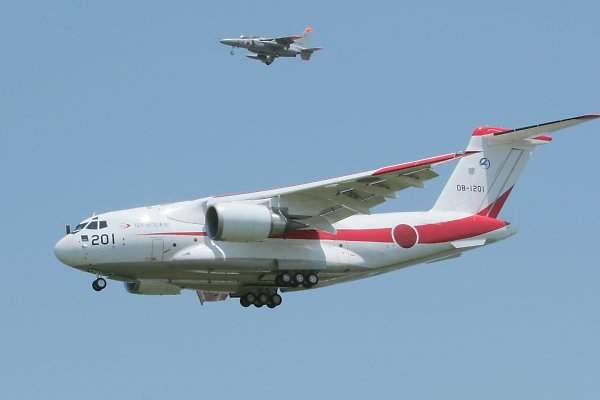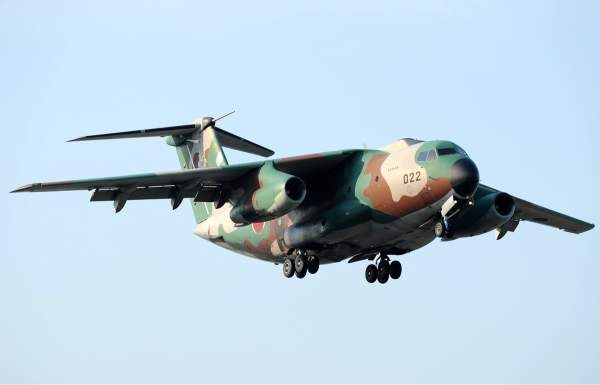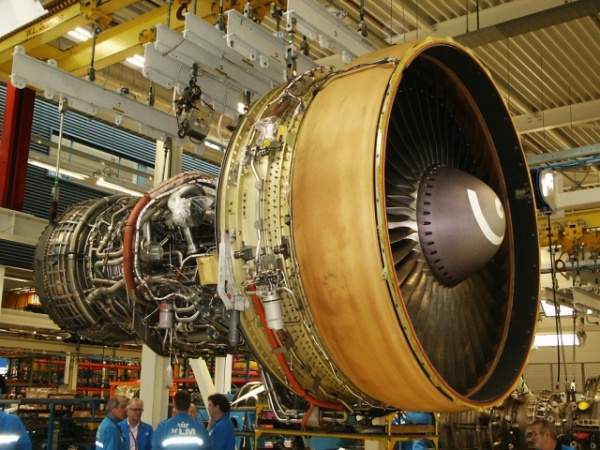Kawasaki C-2 (previously known as XC-2) is an advanced military transport aircraft designed and manufactured by Japan-based Kawasaki Heavy Industries (KHI). The aircraft is suitable for military and commercial transport and is being built to meet the requirements of the Japan Air Self-Defense Force (JASDF).
The C-2 is a derivative of the Kawasaki C-1 transport aircraft. Approximately 40 C-2s are initially scheduled to be manufactured.
Kawasaki built two prototypes of the C-2 by 2010. The maiden flight of the first prototype took place at Kakamigahara in Gifu Prefecture in January 2010, and was delivered to the JASDF in March 2010.
The second prototype completed its maiden flight in January 2011, and was delivered to the JASDF in March 2011. The first serial production aircraft was delivered to the JASDF in June 2016. The first flight of the third prototype took place in May 2016.
The JASDF deployed the Kawasaki C-2 aircraft at the Miho airbase in March 2017. By 2020, ten Kawasaki C-2 aircraft are expected to be deployed at Japan’s bases.
The aircraft can transport troops, drop supplies and undertake medical evacuation during the day and night, even in hostile environments.
C-X and P-X transport and partol aircraft programmes
The C-X and P-X programme was launched by the Japan Defence Agency (Japan’s Ministry of Defence) in July 2007.
The C-X development aims to replace the ageing C-1 and C-130J Super Hercules transport aircraft fleet in the JASDF.
The P-X development is aimed at superseding the P-3C patrol aircraft currently in service with Japan Maritime Self-Defense Force (JMSDF).
The programme utilises combined-off-the-shelf (COTS) technology to decrease the development and production cost. It is the first indigenous development programme involving development of two aircraft in a single project.
Development of the C-2 by the Japanese Ministy of Defence and KHI
The Japan Ministry of Defence had initially planned to procure the C-130J Super Hercules, C-17 Globemaster III and Airbus 400M aircraft under its JPY340bn ($3.8bn) C-X and P-X programme. These aircraft, however, did not meet Japan’s military requirements. The Ministry of Defence, therefore, decided to build an indigenous transport aircraft.
KHI was selected as the prime contractor for the programme in November 2001.
The development of the C-2 began in 2001 to replace C-1 and C-130J Super Hercules. The development of XP-1 fixed wing maritime patrol aircraft commenced as part of the P-X aircraft development.
The C-2 and XP-1 are being built concurrently to achieve significant cost savings. Both aircraft share the same airframe and system components. Their basic wing structure is the same, with different sweep angle and engines.
Design and avionics of the advanced military transport aircraft
The C-2 has been designed to take-off and land on unprepared airstrips or short runways such as grass, snow and mud. The 43.9m-long, 44.4m-wide and 14.2m-high C-2 features a high wing monoplane design.
The aircraft has a glassed-in nose, a pressurised flight deck, cargo hold and a rear loading ramp, which can open in-flight.
The C-2 features a cockpit panel and windows, a horizontal stabiliser, an auxiliary power unit, and an anti-collision light and gear control unit.
The tricycle-type landing gear includes low-pressure tyres and disc brakes. The aircraft can carry 20 A-22 containers or eight 463L pallets in its cargo compartment.
Integration of advanced technologies provides the C-2 with faster and superior cruise, a greater flight range, heavier payload and spacious cargo compartments, compared to the C-1 aircraft.
The avionics suite installed in the C-2 includes tactical flight management system, in-flight refuelling facility and night vision system. The aircraft is also equipped with an automatic loading and unloading system for handling cargo.
Turbofan engines and performance of Kawasaki Heavy Industries’s C-2
The C-2 is powered by two GE CF6-80C2K1F engines designed and manufactured by General Electric Aviation. Each engine can produce a maximum 266kN thrust.
It is equipped with a single fan, four-stage low-pressure and 14-stage high-pressure axial compressors, a five-stage low-pressure turbine, a dual-stage high-pressure turbine and an annular combustor.
The engine is 4.26m-long and 2.69m in diameter. The dry weight of the engine varies between 4,300kg and 4,472kg.
The C-2 can fly at a maximum speed of 890km/h. The maximum and ferry ranges of the aircraft are 6,500km and 10,000km, respectively. The service ceiling is 12,200m.
The Global Military Aircraft Market 2011-2021
This project forms part of our recent analysis and forecasts of the global military aircraft market available from our business information platform Strategic Defence Intelligence. For more information click here or contact us: EMEA: +44 20 7936 6783; Americas: +1 415 439 4914; Asia Pacific: +61 2 9947 9709 or via email.











